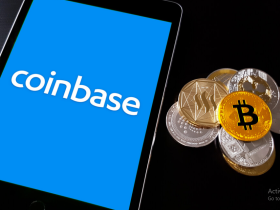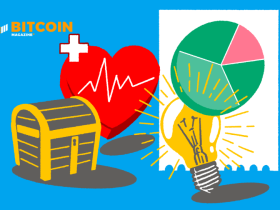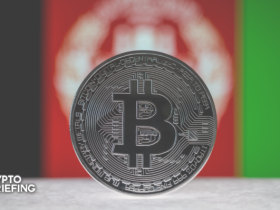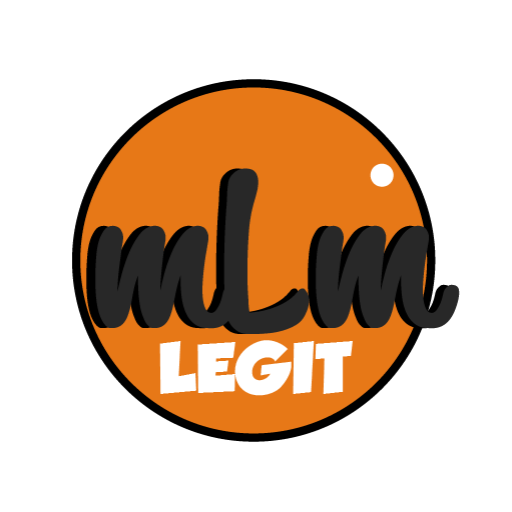Introduction
An example of such a term is the expanding use of Web 3.0. Every day, new sorts of technological jargon appear on the internet. In addition to blockchain and NFTs, those who wish to stay abreast of the most recent technological advances are curious about the following. Every cryptocurrency trader must educate themselves on the evolution of the Internet. This allows them to comprehend the role that cryptocurrencies will play in the future.
What exactly is the Internet?
Internet is a platform where people from distant regions may engage utilizing services such as webpages and message boards. A pc can continue to function without any of the internet, but it cannot share data or information with other computers or devices.
Consequently, the internet has transformed living conditions, and it is now prevalent in every aspect of existence. Additionally, the Internet has spawned products such as websites and mobile applications. Websites are apps that enable users to store information online and interface remotely to services or other software users.
What exactly is the Web?
The World Wide Web is an internet-based community of websites. Search engines and other interlinking protocols connect these websites to one another. A search engine is an application that provides users with access to various websites on the Internet.
Google, Yahoo, Bing, and Duck Duck Go are among the world’s most popular search engines. Simply put, the World Wide Web is an internet protocol that connects identical digital documents. Users can also navigate between websites via the World Wide Web protocol or by clicking on the website’s address. Commonly connected with the concept of the World Wide Web or W3 are the terms html, URLs, Web browsers, and apps.
What exactly is Web 2.0?
Developers have been designing websites with a user interface and input possibilities since the inception of the Internet. These websites employ content code that falls within the Web 2.0 category. Before, websites were interactive like they are now; nevertheless, the most fundamental or first-generation web pages were static and lacked interaction possibilities. Whoever uses a read-only website is employing the first generation of website design.
Web 2.0, on the other hand, is an improvement to the standard style of web design in which web pages provide user integration possibilities. It means that when consumers access a Web 2.0 or wordpress plugin, they can save personal information.
Web 2.0 enables users to create personalized accounts, contribute comments, upload media, exchange messages with other users, and utilize additional interactive capabilities. The Web 2.0 structure strategies to establish to provide greater functionality to website users. Due to Web 2.0 design, many e-commerce and social networking websites acquired prominence.
Beginnings of Web 2.0
During the 1990s, when the development of personal computers gained momentum, Web 1.0 sites remained popular with users. Web 1.0 relied on file types and Server Slide Includes CGI as opposed to Digital marketing languages.
Since 1999, Web 2.0 frameworks have been accessible, but they made their global premiere in the 2000s. With the second generation of web development infrastructure, web developers were able to permit users to upload data that was kept on servers online. Additionally, interoperability, data storage, and processing speed were enhanced.
During the years 2000-2007, Web 2.0 dominated the technology industry and general markets. With the advent of social media platforms such as Facebook and Twitter, the global adoption of Web 2.0 development standards grew in popularity.
At the same time, firms saw a big growth opportunities in e-commerce websites since Web 2.0 could manage more traffic and keep massive amounts of client data on servers. The average internet speed has increased from kilobits per second to terabytes per second. Simultaneously, the invention of technology such as USB and Ethernet made data transit and individual storage possible.
Key Elements of Web 2.0
Prior to the emergence of Web 3.0, mobile phone applications dominated the technological landscape. All big websites have invested in the development of a mobile application in order to keep their user bases. Nonetheless, consumers must evaluate a number of Web 2.0 product features in order to identify and analyze them separately. Here are some of the most distinguishing characteristics of Web 2.0 sites:
Web 2.0 includes a feature that sorts information according to several parameters. Thus, even if a webpage has catalogued thousands of products or account holders, anyone can search for them and locate them.
Web 2.0 is the foundation of websites that allows users to generate personalized content and interact with it independently. Consider platforms like as YouTube, where content creators may publish a variety of content and engage with users.
Before Web 2.0, only read-only web pages were accessible to users. With the second generation of websites, users can share their views and opinions on any topic.
Web 2.0 has also begun functioning as a content plug-in. It indicates that users may access material on platforms such as television, mobile phones, and other media devices via computers or other input/output devices.
Since users can create password-protected accounts, Web 2.0 offers faster and more customized data computation. It implies that an individual who is purchasing online or connecting socially can save their personal information according on their preferences.
What exactly is Web 3.0?
Web 3.0 is the third version of the framework for the interactive web. It can, at times, seem like an unique ideology or an idea. However, it is inspired by blockchain technology and independent apps. The primary promise made for blockchain technology is that it preserves data privacy and user autonomy.
Similarly, Web 3.0 intends to develop an environment where users have complete control over their data history. Before delving into the intricate notion of Web 3.0, it is important to note that Web 2.0 has been criticized by numerous users.
The greatest complaint about Web 2.0 sites is that they steal users’ information without their knowledge. However, corporations utilizing the Web 2.0 model assert that they must acquire user information in order to keep these platforms free of charge. On the other hand, data theft is harmful since it is sold to advertisers, who use it to construct advertising strategies based on psychological screening of consumers.
In this regard, the fact that Web 3.0 gives developers the freedom to switch data collection models is an improvement. Web 3.0 is also known as the semantic web or third generation web due to its reliance on the metadata network.
The metadata system is a sort of network that, in addition to categorizing the data, makes it accessible to any user and computer on the premises. In other words, Web 3.0 eliminates the need for a centralized website administrator.
Source of Web 3.0
Tim Berners-Lee, a computer scientist, introduced the concept of a semantic web in the 1990s, which is an intriguing fact. The IT businesses, on the other hand, were more focused on integrating technologies such as AI, ML, and VR/AR, among others.
In contrast, the advent and development of Blockchain have made the Web 3.0 concept more viable and feasible for commercial use during the past decade. Last year, Facebook and its affiliated businesses changed over to Meta, shedding additional light on the notion.
Web 2.0 gave rise to social media and e-commerce websites on a worldwide scale. However, Online 3.0 aims to make web browsing a more democratic and independent encounter for its consumers.
Key Elements of Web 3.0
By comprehending the primary characteristics of Web 3.0, the reader will be better able to recognize its function, uses, and applicability. Here are some of its most distinguishing characteristics:
Web 3.0 relies significantly on advanced data sorting plug-ins such as Artificial Intelligence, making it more efficient and manageable than Web 2.0.
Web 3.0 assures that consumers have access to media files such as 3D animations and Ultra HD visuals by enhancing frame rate, speed, and storage capacity.
Web 3.0 is a semantic update, which implies it can comprehend words and generate results based on them as opposed to hashes. It also implies that the interaction between robots and humans, such as reacting to bots, is simplified.
Another of the most distinguishing characteristics of Web 3.0 is that it allows users allows for more control over their personal data, privacy, and security protocols.
Web 3.0 can enhance official interactions with individuals by enabling them to use verified yet pseudonymous identities. It can also facilitate the creation of virtual workspaces with a working population as the new standard.
Utilizing encryption and Dispersed Ledger Technology (DLT), commercial businesses can provide setting meaningful, jobs, responsibilities, and permissions levels to employees using the Web 3.0 model for personalized use.
Is Web 3.0 an Improvement over Web 2.0?
Web 3.0 will not significantly alter the user interface for the majority of Internet users. Furthermore, it may offer significant improvements to a number of problems that plagued Web 2.0. Due to the negative impact of social media on day-to-day living, the majority of individuals are currently deleting their online profiles. A big concern for consumers is that social media platforms track and sell their conduct to marketing organizations.
Marketers use this information to create user profiles and advertisements with greater psychological appeal for unwitting viewers. In turn, customers’ decision-making abilities are impaired, and they may make dangerous choices.
In addition to marketers, political campaign managers have begun to use the same data to influence the public’s vote through the use of keywords and other strategies. People thus have begun to believe that these websites cause more harm than good.
Web 3.0’s promise of a transition from data gathering to data protection is therefore more appealing to users. Future Web 3.0 platforms could also provide data purchasing choices for its customers and incentivize them with cryptocurrencies. In addition, encryption software boosts the capability of security protocols in contrast to Web 2.0. Borrowing from blockchain Web 3.0 can also play a significant role in increasing the popularity of cryptocurrencies as a medium of exchange.
Web 3.0 is based on DLT and decentralization technologies, which enables it to incorporate more complicated technology. Web 3.0 websites can therefore incorporate AI plug-ins that enhance equipment and human-to-machine communication. Because Web 2.0 sites are easily indexed by hackers and threat actors, people are hesitant to post any personal information on them.
Web 3.0, on the other hand, promises to be an encrypted platform with significantly improved security standards. In this approach, Web 3.0 can overcome the growing number of trust difficulties among Web 2.0 consumers. Web 3.0 enables developers to integrate complicated design modules, such as 3D models, animations, and high-end graphic media files, to a website’s design, hence increasing its attractiveness to the typical user.
Comparative Analysis of Web 3.0 and Web 2.0
It is time to put Web 3.0 and Web 2.0 against one another now that their inner workings and key concepts have been fully developed. A comparison analysis of the two web generations will reveal to the reader the shortcomings and strengths of both versions. Here are some of the most crucial proportional characteristics of Web 3.0 and Web 2.0 for in-depth analysis:
Conception
Web 2.0 was founded on the idea of encouraging user interactivity on websites. Even during initial generation of the Web, users could only read webpage content. The users were unable to add fresh content to the static web pages of the first generation. Therefore, developers deemed it necessary to upgrade it to the second generation so that users may remark, share, and contribute numerous other forms of feedback.
Web 3.0, often known as the third-generation web, has as its primary objective the decentralization of websites. The method has existed since the 1990s, but blockchain and cryptocurrencies have made it applicable and implementable for commercial application.
In this way, corporations with Web 3.0 websites would not be required to sell user data, which is a major concern with Web 2.0.
Technology
The technological components of the third-generation and second-generation webs are distinguishable. Web 2.0 uses programming languages such as AJAX, JavaScript, HTML5, and CSS3 to create the menu system, whereas Web 3.0 has quite different guidelines.
Web 3.0 employs plug-ins such as Artificial Intelligence, Machine Learning, and Decentralized protocols. Notably, Web 3.0 software intend to include support for cryptocurrencies and simultaneously empower users to function independently.
Web 2.0 software, on the other hand, enable users to connect with one another and make online purchases or sales. Given that the essential concepts of the two web generations are distinct, it follows that their creation and editing require distinct information systems.
Consumer Demand
The related potential audience of Web 2.0 platforms exists in the form of a community. Take any social media site as an example; these sites generate traffic by allowing users to discuss various topics and communicate with others who share their interests.
While users are able to build individual accounts, they also customize their account configuration to communicate with the larger community. In the meantime, Web 3.0 is designed to provide users greater autonomy by enabling data protection, security, and enhanced privacy features.
Integrations
Web 2.0 is a framework that popularized social media and e-commerce applications. These are two of the most prominent and defining business uses of Web 2.0. It also had a significant effect on how people connect with one another, generated new jobs, and altered the economic growth. In contrast, AI and ML applications will be the most prevalent Web 3.0 applications. Due to the concept’s technical benefits over Web 2.0, there is still significant effort to be done to increase its popularity among everyday users.
Security and Data
Web 2.0 stores user information on private servers. Consequently, they are not very secure, and firms own all user-generated content. The same is true for copyright holders, who can earn substantial cash from these platforms, but must adhere to the rules imposed by the private corporation and have no control over their data.
Web 3.0, on the other hand, employs DLT and blockchain technology, which guarantees more personal data controllers for users and enhances the network’s security.
Applications
Web 2.0 enabled user interactivity and the development of interconnected websites, paving the door for smartphone apps. No one could sell things online or offer services to a hyper-targeted audience if blogs were read-only. In contrast, Web 3.0 can facilitate the development of development tools that provide superior services compared to Web 2.0.
Conclusion
The function of technology is to continue to evolve. Once upon a time, people could only make purchases by physically visiting a market. Nonetheless, the Internet has redefined all of that within the past two decades, and it is now commonplace for consumers to order things from distant locations while sitting at home.
Web 2.0 is an improvement over the first generation of the web, and Web 3.0 is an advancement over the second generation. To continue advancing, people must acquire knowledge of the most recent technology and choose the most effective ways to employ them.











 Bitcoin
Bitcoin  Ethereum
Ethereum  XRP
XRP  Tether
Tether  Solana
Solana  Dogecoin
Dogecoin  USDC
USDC  Cardano
Cardano  Lido Staked Ether
Lido Staked Ether  TRON
TRON  Chainlink
Chainlink  Avalanche
Avalanche  Sui
Sui  Wrapped stETH
Wrapped stETH  Wrapped Bitcoin
Wrapped Bitcoin  Stellar
Stellar  Toncoin
Toncoin  Hedera
Hedera  Shiba Inu
Shiba Inu  Polkadot
Polkadot  WETH
WETH  LEO Token
LEO Token  Litecoin
Litecoin  Bitcoin Cash
Bitcoin Cash  Bitget Token
Bitget Token  Hyperliquid
Hyperliquid  Uniswap
Uniswap  Official Trump
Official Trump  Wrapped eETH
Wrapped eETH  Pepe
Pepe  USDS
USDS  NEAR Protocol
NEAR Protocol  Ethena USDe
Ethena USDe  Aave
Aave  Aptos
Aptos  Internet Computer
Internet Computer  Ondo
Ondo  WhiteBIT Coin
WhiteBIT Coin  Ethereum Classic
Ethereum Classic  Monero
Monero  Mantle
Mantle  Cronos
Cronos  POL (ex-MATIC)
POL (ex-MATIC)  Render
Render  Dai
Dai  Algorand
Algorand  MANTRA
MANTRA  OKB
OKB 
Leave a Reply